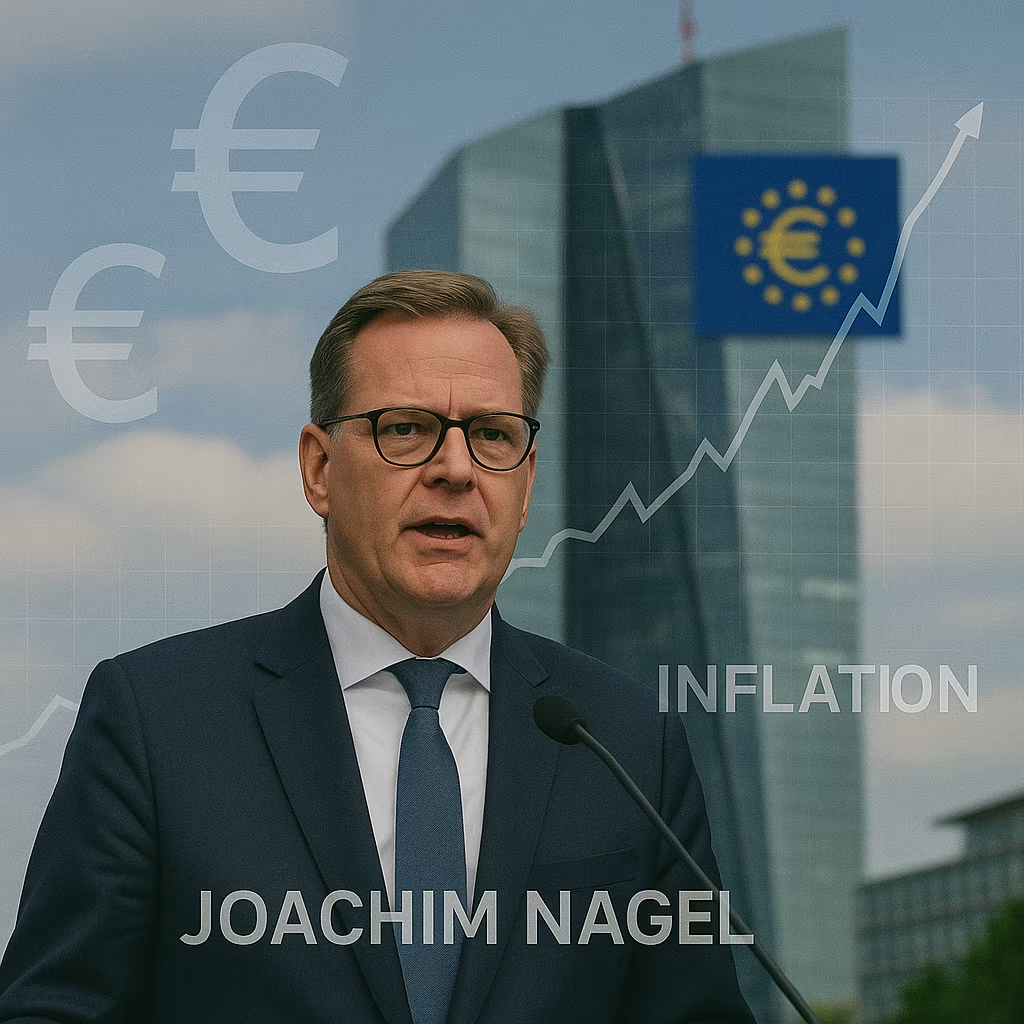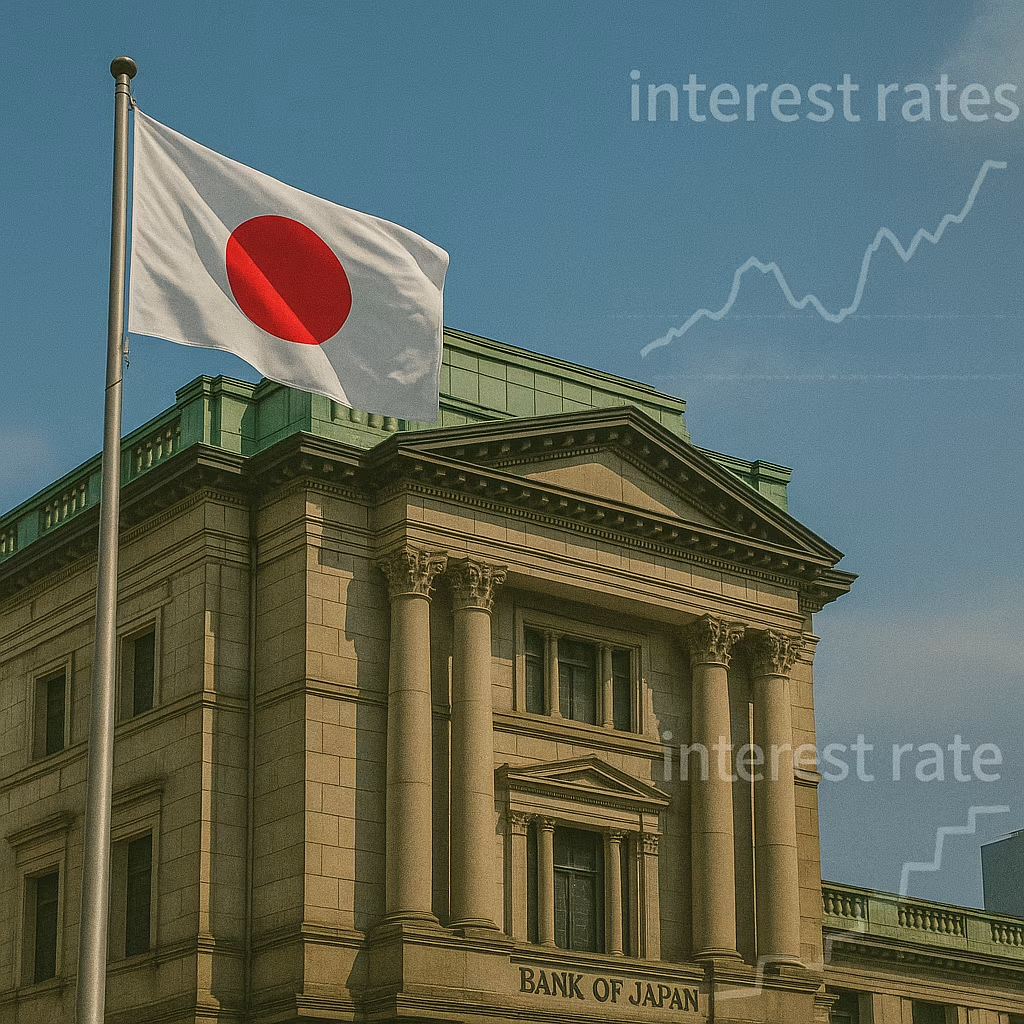European Central Bank (ECB) Governing Council member Joachim Nagel has said that interest rates in the eurozone are currently at a “very good level,” giving the central bank the flexibility to respond to changing economic conditions. His remarks suggest that the ECB is confident in its current monetary stance while remaining ready to adjust policy if inflationary or economic trends shift unexpectedly.
Rates at a “Very Good Level”
Nagel, who also serves as president of Germany’s Bundesbank, indicated that the ECB’s current interest rate levels are appropriately positioned to balance the need for price stability with the risks to economic growth. After a historically aggressive rate-hiking cycle aimed at bringing inflation back toward the 2% target, the ECB has paused further increases, signaling a shift toward a more data-dependent approach.
By describing rates as being at a “very good level,” Nagel is essentially saying that monetary policy is neither overly restrictive nor too loose — a position that offers flexibility in either direction. This middle ground allows the ECB to hold rates steady, cut them if economic growth weakens significantly, or raise them again if inflationary pressures reemerge.
The Inflation Context
Eurozone inflation has fallen significantly from the peaks seen during the post-pandemic recovery and energy crisis, but it remains slightly above the ECB’s 2% target. While falling energy prices and easing supply chain bottlenecks have helped cool price growth, core inflation — which strips out volatile items such as food and energy — remains a concern.
Nagel emphasized that inflation must be firmly anchored around the 2% level to ensure economic stability. He also reiterated that monetary policy decisions will remain guided by incoming data, with the ECB avoiding pre-commitments to a specific rate path.
Economic Growth Challenges
The ECB’s decision-making is being shaped not only by inflation but also by slowing growth across the eurozone. The bloc’s largest economies — including Germany, France, and Italy — have been grappling with weak industrial output, sluggish consumer demand, and external headwinds such as weaker global trade.
Germany, in particular, has faced persistent economic challenges, including a slowdown in manufacturing, high energy costs, and weaker export demand. As Bundesbank president, Nagel is especially mindful of the risks that prolonged economic stagnation could pose to the region’s financial stability.
Flexibility as a Strategic Advantage
Nagel’s comments on flexibility highlight a key strategic principle for the ECB at this stage of the economic cycle. Instead of committing to a specific trajectory for rates, the central bank is maintaining room to maneuver:
- If inflation rises unexpectedly: Rates could be adjusted upward again to reinforce price stability.
- If growth slows sharply: Rates could be cut to provide support to the economy.
- If current trends persist: Rates can be held steady to allow the full effects of previous hikes to filter through.
This approach mirrors the stance of other major central banks, such as the U.S. Federal Reserve, which has also signaled a readiness to adapt policy in response to evolving data.
Financial Market Implications
Nagel’s comments were closely watched by investors, as they provide insight into the ECB’s thinking. Markets generally interpreted his remarks as signaling no immediate rate moves but acknowledging that both hikes and cuts remain possible.
Bond markets were stable following his speech, while the euro saw only minor fluctuations. Equity markets took the message positively, with some sectors — particularly banking and consumer discretionary — benefiting from the perception that policy rates are likely to remain stable in the short term.
Policy Communication and Credibility
Nagel’s statement reflects the ECB’s broader communication strategy: be transparent, remain data-driven, and avoid locking into a predetermined course of action. This approach is designed to strengthen credibility and manage expectations among businesses, consumers, and financial markets.
By signaling both confidence in the current policy stance and openness to future adjustments, the ECB aims to avoid the pitfalls of overconfidence or policy inertia. Flexibility, in this context, is a tool for building resilience against unpredictable shocks.
Key Risks Ahead
Despite the ECB’s relatively stable outlook, several risks could challenge the current policy balance:
- Geopolitical Tensions
Energy prices could spike again if global conflicts disrupt supply, potentially reigniting inflationary pressures. - Global Economic Slowdown
Weaker demand from key trading partners, such as China and the U.S., could weigh on eurozone exports and growth. - Labor Market Dynamics
Wage growth, if too strong, could sustain inflationary pressures even as headline inflation moderates. - Fiscal Policy Uncertainty
Divergent fiscal policies among eurozone member states could complicate the ECB’s efforts to manage regional inflation and stability.
The Road Ahead
Nagel’s emphasis on flexibility suggests that the ECB will be closely monitoring several key data points in the coming months:
- Inflation reports, particularly core inflation trends.
- GDP growth figures across the eurozone.
- Labor market statistics, including wage growth.
- External trade and global economic developments.
If inflation continues to trend toward the target and economic growth remains subdued, the ECB could keep rates unchanged for an extended period. However, unexpected shocks could still prompt policy shifts.
Joachim Nagel’s assertion that ECB interest rates are at a “very good level” underscores the central bank’s confidence in its current stance, while his emphasis on flexibility reflects an awareness of the uncertain economic environment. With inflation still above target but trending lower, and growth prospects remaining fragile, the ECB is positioning itself to respond swiftly to changes without committing prematurely to a single path.
For markets, businesses, and households, this means that monetary policy in the eurozone will remain adaptive and data-driven, with the ultimate goal of securing price stability while supporting sustainable economic growth.





